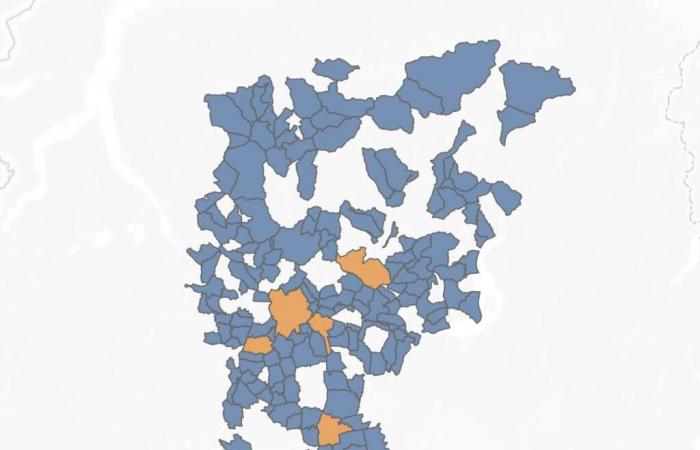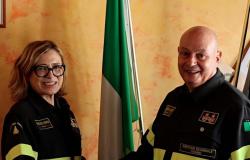Bergamo. Almost a month after the call to the polls which involved Bergamo and 164 municipalities of the province, out of 243 in total, It’s time to take stock. Only six days ago, even the last large town in the Bergamo area, Romano di Lombardia, the only one with more than 15,000 inhabitants that ended up in the second round, elected its new mayor, Gianfranco Gafforelli. Over 600 thousand voters, more than half of the total population of the province, contributed, with their choice, to give a name and a face to their first citizen, thus determining not only the leadership of the government of the territory for the next five years, but also redrawing forces and balances inside and outside the parties.
Time to take stock, therefore, as happens every time the administrative session occurs and when, as in this case, 70% of the countries were involved. Analysis with a double value because it allows, net of the civic lists, to draw a line on the performance of the parties, on the basis of victories and defeats, and to read what the political consequences could also be on the government of the Province, by virtue of the mechanism of election of its President who, precisely because he is second level, is chosen from the list of mayors.
We start from AVS, Green Alliance Italian Left and the 5 Star Movement, with the former doing well in Bergamo, where they collect over 6% and bring the Councilor for Green and Environment Oriana Ruzzini to the Council, and also doing well in the European elections, where they double compared to the 2022 Politics, but not received in the province. Negative judgment for M5S who in the city do not even collect 3%, remaining outside the City Council. Zero councilors and everything to be redone.
Il PD gathers wide acclaim in Europe, George Gori docet, so much so as to allow the Italian vote to be considered now polarized between the center-left and the center-right, with the Third Pole out of the game, and obtains some victories in the province in municipalities under 15 thousand such as Castelli di Calepio. Different story for Bergamo which confirms itself as a Democratic stronghold. A good balance, therefore, where the election of Elena Carnevaleven if the tile of the debacle weighs in Albino, Seriate and Dalmine, where the center-right travels in continuity not of color but of political affiliation, and above all Romano di Lombardia where there is a change. End of the aegis branded Pd and new course with the candidate of Forza Italia. The Pd thus remains the only true party that exists and resists the opposition. In fact, taking away the Dem affiliation, in the province there is practically nothing else except the civic spirit that supports the party that remains the North Star and certainty of the center-left coalition.
Coming to the center-right, Brothers of Italy there remains, at least on the territory, the negative surprise. A vote, that of the Bergamo territory, in contrast with that beyond the Alps: on the same day of the over 30% gained in the European elections, the party of the Prime Minister Giorgia Meloni halves its votes both in the city and in the Province. It loses share in Dalmine, Romano, Seriate and Albino loses and also in the capital it drops from 25 to 14%. Although it remains the first party, the numbers tell of a reality that evidently has not yet found its full dimension and its true representation in Bergamo, with a ruling class that struggles to fully intercept the national vote. The candidate indicated by FdI, the civic Andrea Pezzotta, did not make it, giving way to Carnevali who, with his election, strengthened the Dem domination that had lasted for two terms. The only flag is that of the Municipality of Seriate with Cortesi as mayor, a man of Fratelli d’Italia and frontman of the coalition in a logic of division that has seen the League take a step back.
.
He’s not doing any better there Lega which is feeling the pinch in the towns with less than 15,000 inhabitants, losing, for example, Martinengo, Sarnico, Pontida and Misano. Paradoxically, it holds up above 15,000, marking a positive note more in the administrative elections than in the European ones. In essence, the opposite of Fratelli d’Italia which pays for an exponential growth of the party at the national level against a decidedly slower one at the provincial level.
Forza Italia it is the only party that is growing: it does well in the European elections and increases its consensus in local elections such as in Albino Dalmine and Seriate, also and above all strengthened by the Romano di Lombardia operation, but also in small municipalities such as Misano, Credaro, Terno d’ Isola and Boltiere. The sore point remains Bergamo where the party is retreating, also thanks to the consensus gathered by the Pezzotta List, the civic party which, with its 14%, has nibbled away votes from the Azzurri, fishing for the center electorate. In general the balance is more than positive, with a favorable trend and with a solid ruling class that responded incisively to the elections.
An analysis which therefore tells of a situation of substantial balance between the parties, but with the balance tipping more towards the centre-right which it will also weigh in September when all the political forces of the territory will be called to recompose the Provincial Council and re-elect its President in a year and a half.
© Reproduction reserved
Subscribe to our Whatsapp channel and stay updated.
Do you want to read BergamoNews without advertising? Subscribe!






